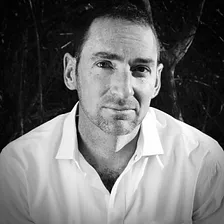This is the first in a series of posts from parent and career educator Seth Biderman on his exploration into out-of-school learning for young people. To learn more, click here.
When my 13-year-old daughter declared, out of the blue, that she no longer wanted to go to school, my wife and I were uniquely prepared. Having been a middle school teacher and principal for years, I’d talked kids through all sorts of frustrations with school. I had an arsenal of arguments, from the economic to the existential, to convince her to endure another year. Calmly, we asked her to say more.
“I’m just tired of sitting in class all day,” she said.
We nudged: Had something happened with her friends? Was there a teacher or particular class she didn’t like?
She assured us that her social life was fine, or, at least, as fine as it can be for anyone in 7th grade. Her teachers were kind and understanding, the classwork was interesting enough, and her grades were excellent. She loved a lot about her school.
But she was tired. Tired of switching subjects every 45 minutes. Tired of not getting to pursue her own interests. Tired of spending so much time listening and watching. Tired, in other words, of all the practices and protocols inherent to school—what we educators know as the “grammar of schooling.”
I took a breath. I knew this terrain, and had talked students through it before. But in this particular circumstance, I had a problem: I was tired of school myself.
After two decades, I had tired of exercising my beloved craft—teaching—within the particular structures of school. So tired, in fact, that I had recently quit working in schools altogether.
Like my daughter, I was genuinely conflicted. My career was full of remarkable moments of inspiration and connection, meaningful challenge, heart-warming appreciation from families and children, and plenty of fun. What other job pays you to read great books with children, or join in an epic match of playground soccer?
But the silver lining had a cloud: I felt constantly stuck, conflicted between what I knew to be best practices for teaching (i.e. creating space and time, letting kids lead the learning, building connections to other subjects and the “real world”) and the way school was designed (i.e. the frantic switching of classes, the centrality of the teacher and curriculum, the siloed architecture of classrooms and schools). Many days, it felt like driving with the brakes on.
The pandemic finally did me in. Though it was obvious we needed to be imagining new structures, new ways—even if temporary—to support children from afar, we educators found ourselves scrambling to invent the virtual version of the same old grammar of school. From glitchy Zoom lectures to absurd systems for tracking attendance and proctoring tests, it was beyond futile. It was heartbreaking.
When the pandemic had subsided, and schools reopened—essentially unchanged by the greatest societal disruption in generations—I told my family I could no longer do it, and quit at the end of the year.
Now, as my 13-year-old described her own fatigue with school, I realized she’d see right through my usual responses—she’s got a keen nose for parental hypocrisy. I also realized I was no longer contractually obliged to convince any child of the value of school. So I asked her, If she didn’t go to school, what would she do instead?
Without missing a beat, she sketched her dream year of learning. She’d practice acting, dancing, and singing, which she loves more than anything else. She’d learn about space with her grandpa, tear through books and films, and study French in France. She’d even tackle Algebra, so she would be ready to enter high school the following fall.
My wife and I looked at each other. We had to admit, that sounded like a pretty terrific way for a young teenager to spend a year: exploring her interests, deepening her talents, and growing her self-discipline. What my daughter was talking about was not homeschooling, in which a child covers the conventional curriculum from the kitchen table, but “unschooling,” in which a child engages in self-directed, interest-based learning, often far from home.
Over the next few weeks, we weighed the pros and cons of this idea, which my daughter began calling her “X year.” We asked her to talk with her counselor, to make sure she really was ready to forgo daily friend time, classes with favorite teachers, and traditions like 8th grade promotion. My wife and I calculated how much money we could invest in private lessons, after-school programs, and travel. Together, we all mapped out how we might divvy up work spaces in our home, and imagined what a day might look like.
When we met again, our daughter’s resolve had deepened. So we decided—fingers crossed—to give it a try. Come August, when all the other kids start cleaning their sneakers and sharpening their number 2’s, our daughter will be… well, that’s what I’ll share here in Imbroglio, just as soon as we find out.
Why write about this experiment into unschooling here, on a website focused on improving K-12 education? While many families may agree that school can be tiring at times, few are likely to have the interest—let alone the means—to pull their child for a year of self-directed exploration. Faced with the critical task of building a functional, equitable public education system for our nation’s 50 million school-going children, can we learn anything from the experience of one middle-class, 13-year-old child?
I believe we can. As the media sound the death knell on yet another wave of education reform, and as climate change and AI promise threaten more pandemic-type disruptions in the future, it’s time we cast a wider net for solutions.
Beyond the picked-over ideas about how to improve our schools—the endless debates about teacher accountability, relevant curricula, and ideal class size—lies an array of worthy, time-tested approaches to teaching and learning that can, and should, become part of our national conversation about the future of learning. On the margins of education reform we find teenagers in Providence learning through internships in bakeries and bicycle shops; kids in New Mexico pursuing individual passions with community experts; homeschooling families in Oregon partnering with a school that is happy to enroll their children “part-time.”
With the right mindset, these ideas—like our X Year—can inspire schools, communities, and other families as they look for ways to engage all children in fulfilling learning experiences in and out of school. It’s a promising glimpse into reframing education as an exploration of each community’s unique “learning ecosystem,” a decentralized, interconnected web of learning places, of which schools play a major—but not the only—part.
No one should give up on schools; they’ve served millions of us well, including my daughter. We just need to reimagine education as something more than just school. If we can harvest ideas from the margins, grow them into viable alternatives for children of all ages in all sorts of settings, we’ll no longer have to convince tired kids to stay in school by snowing them with an arsenal of arguments. We’ll offer an array of options instead.




